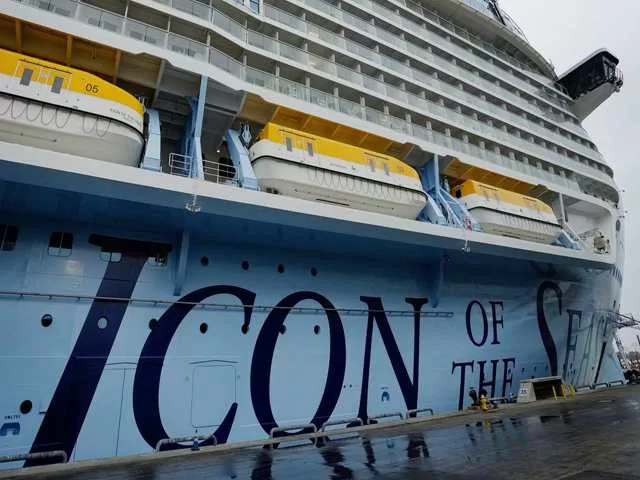World’s largest cruise ship, Icon of the Seas, raises environmental concerns over its use of liquefied natural gas. Luxury voyage sparks debate on methane emissions.
Concerns Arise as World’s Largest Cruise Ship Sets Sail Amid Environmental Debate
In a spectacular display of maritime opulence, Royal Caribbean’s Icon of the Seas embarked on its maiden voyage from Miami, Florida, marking the beginning of a new era in luxury cruising. However, as the behemoth of the seas, capable of accommodating 7,600 passengers and 2,350 crew members, sails into the tropics, environmental groups are raising red flags about the vessel’s environmental impact.
Stretching nearly 1,200 feet from bow to stern and spanning 20 decks, the Icon of the Seas is not just a cruise ship; it’s a floating city divided into eight neighborhoods, boasting six waterslides, seven swimming pools, an ice skating rink, a theater, and an array of over 40 restaurants, bars, and lounges.
The ship’s official christening on Tuesday added a touch of star power, with football legend Lionel Messi and his Inter Miami teammates doing the honors. The vessel’s power source, however, has become a point of contention.
The Icon of the Seas relies on six dual-fuel engines, capable of running on liquefied natural gas (LNG), a fuel alternative lauded by the Cruise Lines International Association for its potential to reduce sulfur and greenhouse gas emissions. Despite this endorsement, environmental groups express reservations, arguing that LNG-powered ships might actually contribute to harmful methane emissions.
Bryan Comer, the director of the Marine Program at the International Council on Clean Transportation (ICCT), voiced his concerns, stating, “It’s a step in the wrong direction.” According to Comer, using LNG as a marine fuel could emit over 120% more life-cycle greenhouse gas emissions than marine gas oil. This is significant, as methane is approximately 80 times more potent than carbon dioxide in terms of warming effects over a 20-year period.
The cruise industry, often criticized for its environmental impact, faces renewed scrutiny with the deployment of such colossal vessels. As the world grapples with climate change, reducing emissions from large-scale operations like cruise ships becomes increasingly crucial to curb global temperature rise.
Royal Caribbean, in response to environmental concerns, asserts that every kilowatt used on the Icon of the Seas undergoes meticulous scrutiny for energy efficiencies and emission reductions. However, the debate over the environmental impact of LNG-powered ships continues to rage, emphasizing the delicate balance between luxury travel and environmental responsibility.
As the Icon of the Seas embarks on its inaugural seven-day island-hopping voyage, it remains to be seen how the cruise industry and regulators will address the growing apprehensions surrounding the environmental footprint of these maritime giants.

